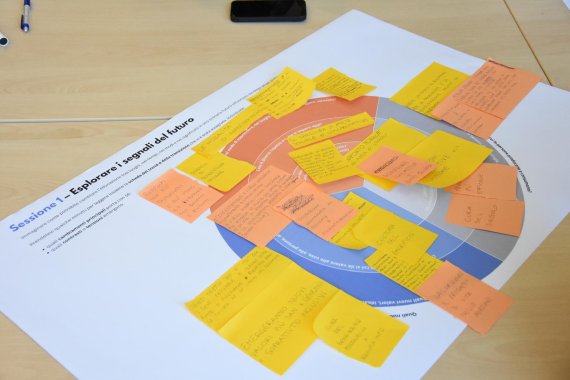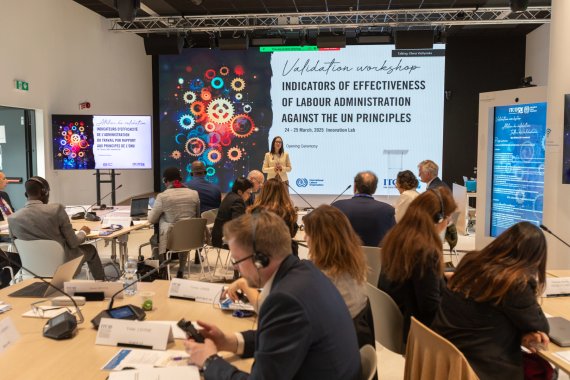Choose, Swap, Wear, Repeat
Choose, Swap, Wear, Repeat
Raising awareness about waste reduction and the circular economy
17 Dicembre 2019
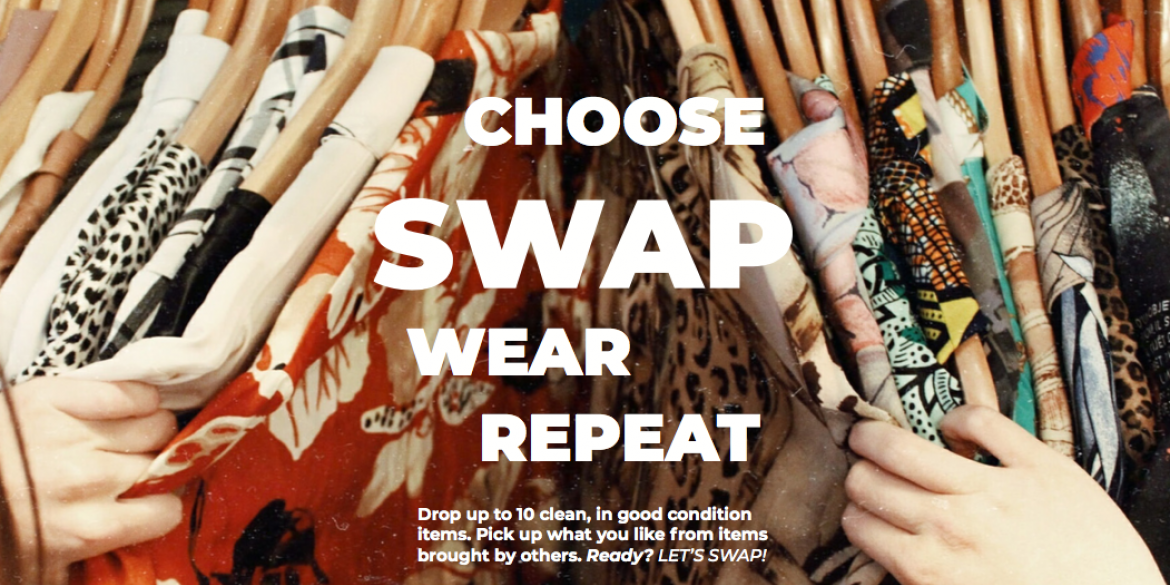
The International Training Centre of the ILO organized its first clothes swap on November 21, 2019 at the Turin Campus to promote the circular economy and reduce waste.
A Swap Day on Campus
In conjunction with the European Waste Reduction Week (November 16-24), the Centre invited staff and participants to participate in a clothes swap. This event was promoted by the Environmental Sustainability Committee, which has been monitoring the Centre’s progress in sustainability since 2011.
Staff and participants were welcome to drop off at most ten, clean pieces of clothing that they no longer wear. Items were then displayed like in a real clothing shop with different sections for sizes and categories for men, women, and children.
Attendees were then able to visit the “shop,” try on these gently-used items, and pick out their favorites in exchange for the items they had brought. For most people, this was their first time participating in a clothes swap:
It’s my first swap event and I think it’s very nice. I didn’t expect there would be so many people bringing things. It’s very successful.
In total, the event hosted about fifty people. They were all enthusiastic and curious about future swap events:
I think this is very important because all of us have many extra things at home. [During the swap], you can get new things and people will get new things from you. It’s really useful! Every time everyone has something to give.
As a result, the Centre is now looking at ways of replicating this pilot initiative more regularly on Campus for staff members, and participants from different courses and Masters.
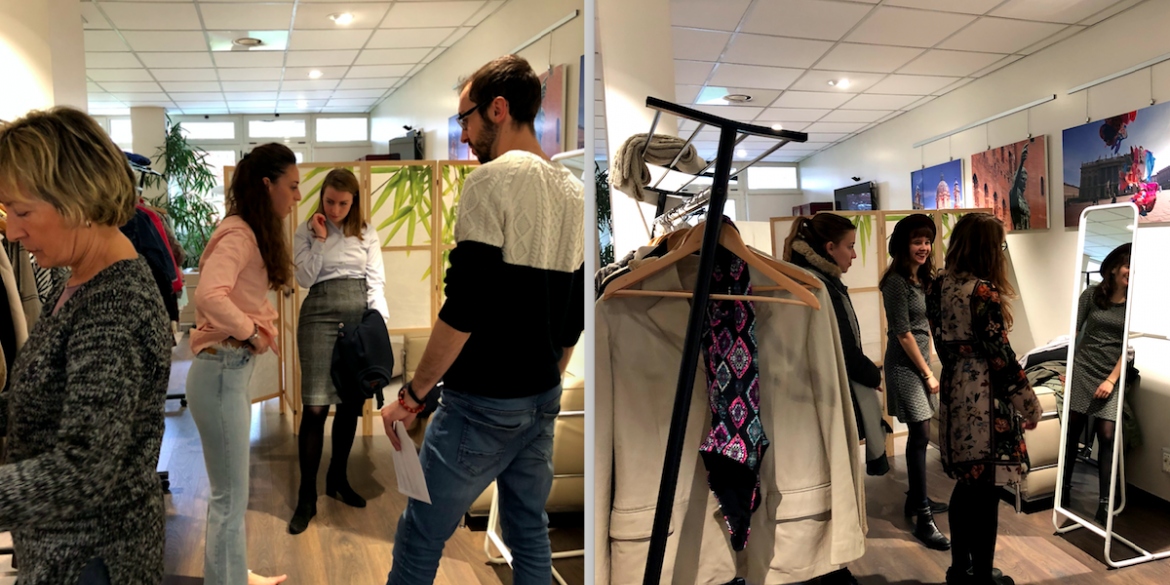
From Single-Use to Circular
The fashion business is one of the most polluting and wasteful industries. Many attendees believe that the event is impactful from a sustainable and environmental point of view.
I think it’s important to move from fast fashion to slow fashion.
It has been estimated that in 2015, EU citizens bought 6.4 million tons of new clothing (12.66 kg per person). Nevertheless, more than 30% of clothing in Europeans’ wardrobes have not been used for at least a year. Once discarded, over half of the garments are not recycled, but end up in mixed household waste and are subsequently sent to incinerators or landfill. Take a look at the European Clothing Action Plan and the European Parliament’s briefing to learn more.
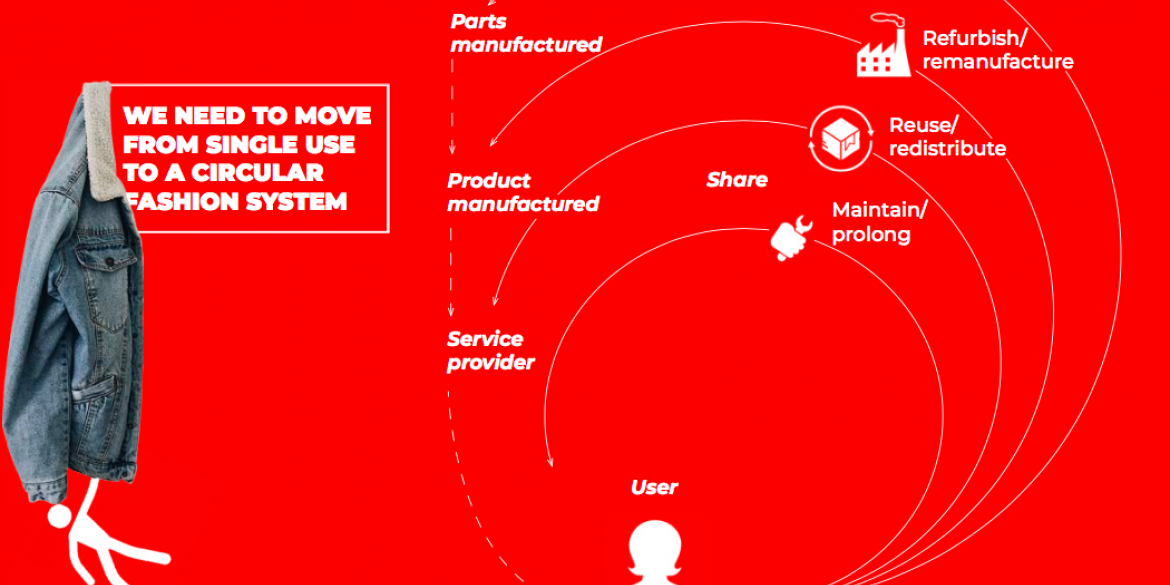
With the aim of contributing to this circular fashion system, all items leftover after the initiative were donated to a local charity shop: Abito Social Factory.
Here’s to swapping for the future of fashion!

